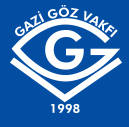Methods: One hundred and five eyes of 102 patients with newly diagnosed AMD receiving intravitreal anti-VEGF injections with Pro Re Nata (PRN) treatment regimen were retrospectively analysed. Mean number of visits and injections, best corrected visual acuity (BCVA), and central macular thickness (CMT) were evaluated during follow-up period.
Results: The mean follow-up period was 21.9±8.7 months. The mean number of visits and injections was 9.34±2.38 and 5.74±1.69, at the end of the first year respectively, and 15.46±6.19 and 8.45±3.66 at the end of the follow-up respectively. At baseline, at the first year of treatment and at the end of follow-up, BCVA was 0.60±0.34, 0.51±0.31, 0.62±0.38 LogMAR and CMT was 366.16±116.75 ?m, 332.75±101.75 ?m and 315.37±96.53 ?m, respectively. At the end of the first year, BCVA was significantly higher than at baseline (p=0.002), whereas no difference was found at the end of follow-up compared to baseline (p=0.94). Mean CMT decreased gradually throughout the treatment. At the end of the follow-up CMT was significantly lower compared to both the baseline and at the first year of treatment(p<0.001 and p=0.003,respectively). In a multivariable regression model older age, male gender, presence of cronic obstrucive pulmonary disease and low baseline BCVA increase the possibility of unexpected treatment outcome (loss of vision or failure to gain vision).
Conclusion: A significant improvement in both CMT and BCVA was observed at the one-year follow-up. Although the anatomical success was maintained with a decrease in CMT at the end of the follow-up period, the functional success in BCVA was not preserved.
Keywords : Age-related macular degeneration, intravitreal injection, vascular endothelial growth factor




